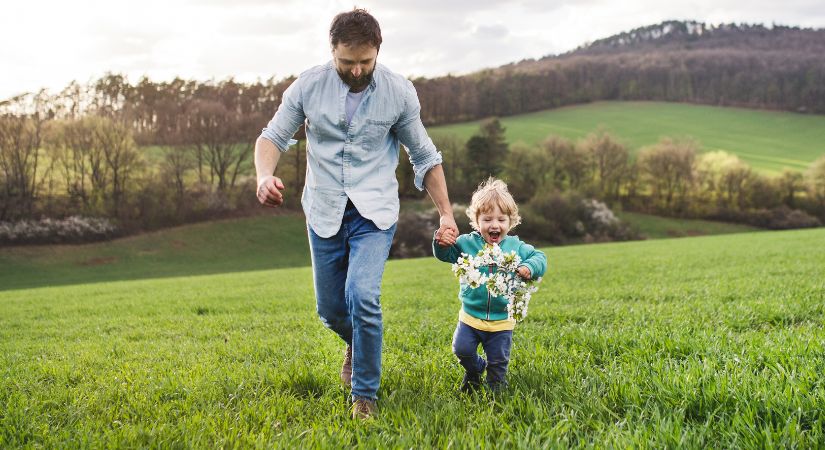In the years of Early Years education, there exists a wonderful opportunity to introduce the youngest learners to the ever-changing marvels of weather and the seasons. This blog explores ways in which practitioners can engage babies and toddlers in the wonders of nature, creating a deep connection with the world around them.
Why is exploring seasons helpful for children’s development in the Early Years?
Exploring changing seasons in Early Years education plays a crucial role in the overall development of children. Here are some reasons why exploring changing seasons is beneficial for children’s development:
Sensory Stimulation: Each season brings a unique set of sensory experiences. Exploring the sights, sounds, textures, and even smells associated with different seasons provides rich sensory stimulation. This, in turn, aids in the development of the child’s sensory processing abilities.
Cognitive Development: Observing and understanding the changes in nature across seasons promotes cognitive development. Children learn to recognise patterns, make comparisons, and categorise information. This cognitive engagement lays the foundation for critical thinking skills.
Language Acquisition: Describing the characteristics of each season, discussing weather changes, and using seasonal vocabulary during activities contribute to language development. Children expand their vocabulary and learn to articulate their observations and experiences.
Emotional Well-Being: Connecting with nature and experiencing the beauty of changing seasons has positive effects on emotional well-being. Outdoor activities and nature walks provide opportunities for relaxation, reducing stress, and promoting a sense of calm and happiness.
Adaptability and Resilience: Experiencing seasonal changes teaches children about adaptability. Witnessing the natural world go through cycles helps them understand the concept of change and builds resilience in the face of transitions.
Environmental Awareness: Understanding seasonal changes fosters environmental awareness from an early age. Children develop a sense of responsibility and appreciation for the natural world, laying the groundwork for future environmental consciousness.
Cultural Understanding: Exploring changing seasons allows for the introduction of cultural celebrations and traditions associated with each season. This exposure broadens children’s cultural understanding and appreciation for diversity.
Curiosity and Inquiry Skills: The ever-changing nature of seasons naturally sparks curiosity. Encouraging children to ask questions, explore, and seek answers cultivates a mindset of inquiry and lifelong learning.

Ways to explore Spring
As spring arrives, settings can take the children outside to explore the wonders of nature awakening after the long winter. You can start by going on nature walks to observe the blooming flowers, budding trees, and chirping birds. The children can learn about different types of flowers and plants, naming them and discussing their characteristics. Outdoor exploration not only connects toddlers and babies with the season but also promotes physical activity, a sense of wonder, and an appreciation for the natural environment.
Gardening activities can be a great way to engage the children in hands-on learning during the spring season. Settings can create small flower beds or plant pots, allowing the children to participate in planting seeds or bulbs. The children can learn about the life cycle of plants, from seed to full bloom, fostering an understanding and appreciation for nature.

Ways to explore Summer
During the summer season, settings can plan a variety of outdoor activities for the children to explore the warm and sunny weather. Water play can be a popular choice, with activities such as water tables, sprinklers, or even setting up small paddling pools. Children can engage in sensory play, pouring and scooping water, and learning about the properties of water. This not only helps in developing fine motor skills as children explore pouring and squeezing but also provides a refreshing experience during the summer months. Supervised water play allows for a fun and safe environment where little ones can splash and experiment.
Settings can organise nature walks or trips to local parks, allowing the children to explore the different natural elements present during the summer. The children can observe insects, butterflies, and birds, learning about their characteristics and habitats. The children can also engage in picnics, outdoor games, and sports, fostering social interaction, language development, and an appreciation for the joys of summer in a relaxed and enjoyable setting.

Ways to explore Autumn
As autumn sets in, settings can explore the changes happening in nature during this season. Nature walks can be organised to collect fallen leaves in various colours. The children can participate in leaf-rubbing activities, using the collected leaves to create art. This activity not only fosters creativity but also supports sensory exploration as the children feel the textures of the leaves and paint.
Settings can introduce the concept of harvest during the autumn season by organising activities related to fruits and vegetables. This can include visits to local farms or markets, where the children can pick their own fruits or vegetables. They can learn about the different types of produce, and their nutritional value, and even engage in cooking or baking activities using seasonal ingredients.

Ways to explore Winter
During the winter season, settings have an incredible opportunity to embrace the unique wonders of this magical time with the children. The snowy landscape opens up a world of exploration and fun activities. Settings can take the children on nature walks, observing the footprints in the snow and learning about different animal tracks. The children can even build snowmen, make snow angels, and engage in friendly snowball fights, promoting physical development, coordination, and teamwork.
To further engage children in the winter season, settings can introduce sensory activities that reflect the cold and icy nature of this time. Sensory bins filled with fake snow or exploring ice cubes can provide a multi-sensory learning experience. By allowing children to touch, feel, and play with these materials, settings help develop their sensory skills and expand their understanding of the world around them.

Early Years settings have the opportunity to explore each season with the children, providing them with a rich learning experience. From the wonders of ice and snow in winter, the awakening of nature in spring, the outdoor fun in summer, to the vibrant colours of autumn, each season offers unique opportunities for exploration, learning, and fun.

